Managing large, complex projects with a diverse team of creative talent can be a challenge. It takes an extremely organized mind, a flexible approach to scheduling, and, most of all, the ability to communicate. With 12 years of production experience, Bait Studio’s VFX Production Manager, Lucy Lawson-Duckett, knows a little about how to make things work. We spoke to her to learn about her best practice approaches to managing creative teams, hitting deadlines, and cultivating a stress-free creative environment.
Kicking off a creative project? Plan, discuss, and prioritize!
The most important thing right from the outset is to gather data and to as the client the right questions. Have you established the tentpole objectives of the project? Where are the pitfalls or creative conflicts that could arise? Once you understand the goals and desires for the entire project, you can devise a plan with your core department heads.
Be mindful of scheduling in full creative and logistical briefings, with adequate time to convey the proper context for the work. I.e., What is the work for? What are the deadlines? What production value tier are we working towards? How does this work fit within the project’s narrative? What are the logistics involved? How much crew expansion is needed? What are the contingencies if something goes wrong? You should answer these questions early. Having the department heads on the same page right off the bat will save you so much time in the long run.
You should also assess the key client phases, not just in terms of your internal pipeline and approval targets, but also concerning any client “staging” a producer may need. Perhaps there’s a potential deal-breaking issue for an executive? Some strategically scheduled concept/test work could help to put minds at ease. It will also make you and your creative team an ally of the project’s producer.
Crew wise, if you’re lucky enough to be familiar with your team and how they work, you’ll know who leans on who and who has the most fruitful working relationships. Enabling that can be very useful. You’ll need to be sensitive, however, especially if these working relationships don’t marry up to official job titles.
Once you have the full lay of the land, prioritize everything to within an inch of its life! Sometimes the scale of production is so large that you’ve got to break it down for the department heads as simply as possible. Constantly asking, “What’s the most important thing we should be doing right now?” is crucial. You’ll need to prioritize the overall Production schedule, prioritize the individual department schedules and tasks, prioritize individual crew lists, and make sure all these priorities align at all times. Prioritize your priorities!
Help different departments to work collaboratively; don’t let silos form
It’s so easy for people to slip into a blinkered mode and focus solely on their individual goals. You can unintentionally develop a “them and us” culture in this way, which doesn’t cultivate a healthy environment for collaboration. You want to eliminate it as soon as you see it happening.
I’ve experienced situations like this in the past. Things can become especially entrenched when you have teams that need to work together over a long period. In the work I’m doing at Bait Studio now, we have a smaller studio setup where we may not be working on the same projects directly, but we still need to keep in sync with each other. To keep things feeling collaborative, we’ve instituted weekly meetings where we update everyone about the projects on which we were working. If there’s a particular tech issue that one team is facing, discussing it with people outside the department can bring new perspectives and can often solve problems much more quickly than anticipated. I’m mindful to keep these meetings from becoming a weekly snooze fest, though! I make an agenda, and I keep it short.
Plan and communicate when you expect large workloads
When we’ve got a considerable task load coming in, preparation is everything. Our first port of call is to discuss the schedule with the client. We always suggest that the production schedule be broken down into manageable chunks, then break it down further to ensure that we hand edits over incrementally, and any edit delays don’t bunch the VFX to the end of the schedule.
Continual communication with both clients and producers is vital. It can be tricky to ensure that edits are locked precisely when they need to be. So, being open and flexible to working on specific locked scenes ahead of time or full show lock can be beneficial. The client may be having issues of their own after all, and you want to make sure that they can hit the deadlines outlined in their own schedule. So, maybe there’s a way, as a VFX company, that you can help. You could say, “Hey, if you’ve got one scene locked, we can work on this other one.” “If you can’t hit this target, how about his one?” We’ll reorganize to make things as painless as possible, and maybe even inform on scenes that aren’t close to lock.
Bait Studio has credits on a multitude of projects, such as Netflix’s Apostle and BBC’s Casualty.
At Bait Studio, we often work on specific locked scenes individually and ensure that there are no bottlenecks for us, meaning the client can see results sooner. There are many benefits to this. Viewing near finals early on can help inform the rest of the cut or even highlight other potential continuity/story issues that no one has thought of. It also establishes excellent rapport with the production and gives them an understanding of your turnaround times. You can also cement key looks, and the true scope of the task ahead comes into focus. You’re able to evaluative at this first stage if you’ve under or overestimated the amount of additional crew you’ll need, such as coordinators, assistants, artists, and so forth.
Beyond that, after the client turnover meeting, we’ll have a roadmap meeting at Bait Studio, where we go through everything and talk specifically about the work needed on the shot. We’ll usually do that with the department heads or sometimes with all the artists involved if it’s practical to do so. That way, people understand what the context of the show is and what needs to happen. And if I haven’t made it clear already, context is hugely important! Often things will be brought up in those meetings that we haven’t considered, so it can help to inform the scheduling, highlighting that we may need additional roto/prep, etc.
When it comes to crunch and overtime, talking with your client means helping your team
There’s always that point in a production where something has run over, or there have been more changes than initially anticipated. You can’t avoid it, no matter how organized you are. And things begin to get very tight.
To eliminate the stress at Bait Studio, we’ve adopted a simple approach where we’re just honest with the client. We let them know as soon as we can that we’re going to struggle to meet specific deadlines. At the same time, we make the team understand the situation of the schedule and the broader implications for the production of not delivering things on time. You can then ask for a little extra time while but also letting the client know what you’re doing to streamline the process.
There are various ways to help the client understand your progress (which in turn eases the stress on your team) like showing them work more often. For instance, we might take three or four rounds of iteration to get to a point before the client would usually see the work. But in this instance, maybe we would show it to the client at round two, just be able to get the feedback that we need to get something approved faster. That may be sooner than you would usually care to show a client your work, but it can help in those challenging situations where time is pressing.
It’s also worth pointing out that in situations like these, stress management is of the utmost importance. To manage this, I like to jump into hardcore prioritizing mode, assessing the tasks we have and the individual artist to-do lists. I talk to our artists to make sure that they know what they should be working on, that they’re comfortable, and that they have a plan they can stick to, all while gently reminding them they don’t have to stress about the workload as a whole. Yes, we have to do all of the work, and yes, it’s all urgent, but if they can take it all one step at a time, it helps alleviate the pressure both for them and the team at large.
People management = forming relationships and knowing your team
Sometimes an artist will be aware of what kind of support they need to deliver their best work. They may say, “I need you to give me a little more pressure,” or, “Can you hold me more accountable and check in with me regularly to see how I’m doing?”
However, you’ll also get artists that don’t know what support they need, so you’ve got to work out what they respond to the best. To do, simply observe their efficiency when working under different scenarios. For instance, some artists appreciate you going through their to-do lists and talking through what needs completing. Some artists appreciate more regular contact with the supervisor; for them to come over and eyeball their work and give instant feedback. You need to see if these interactions work or not for an artist. When you get into that routine of assessing how people like to work and how they interact and support each other, and build out a plan to manage people in the way that’s most efficient for them, you’ll be working at the optimum levels with the crew.






Some of Bait Studio’s talented staff. Clockwise from top left: Llyr Williams (Lead CG Artist), Francesca Fornoni (Senior Motion Designer), Christian Lett (VFX Supervisor), Helen Pooler (Production Manager), Paul Nicholas (Creative Director), Peter Rogers (Managing Director).
If you’re in a situation where you don’t know the crew members, and you don’t have that time to build a personal relationship and understand what it is that they need, just go and ask them questions! “How do you want to do this?” “We need this, so is it helpful for me to supply you with this or do that?” I’m always surprised by how useful it is just to be direct in this way.
What if I find myself working with an Artist/collaborator who likes to work “organically” – i.e., with little to no interaction whatsoever. It’s a tough one. If that’s genuinely the way to get the best work out of them, then that’s fine, as long as you can be sure that you break down the creative process into logical pieces and sequential stages so they can see what they need to do. As long as the artist is consistent and you can pinpoint they are on a schedule and working at a steady pace, then you’ll be in a stable place.
Supporting a healthy work/life balance is all about communication
Striking the right work-life balance for everyone on production is challenging. There will always be key or more senior team members that studios rely on more than others. At Bait Studio, we do our best to mitigate this by pulling together a realistic schedule right at the start of production. It should be as honest as possible, approached from a pragmatic point of view, and communicated as candidly as possible with the client that these are the deadlines, and these are our expectations. You need to make sure that the client is aware of repercussions of approvals not happening or edit locks delaying, or unlocking, or the horrible latching an edit and turning it over and expecting any changes to be absorbed by the VFX company. Communicating that upfront is critical. From that point on, you can put some contingencies in place for senior artists.
It all stems from solid organization from the ground up and making sure that the overtime you’re asking for is going to benefit and maximize your output. You can even start to make reliable estimations, e.g., “If I have people work this many numbers of hours extra and have them come in on the weekends, we’ll be X number of human-days ahead in the schedule.” Is this enough to realign the schedule, or does something else need to happen? If I establish that extra work will help, I give as much notice as possible and demonstrate how much of a benefit the extra effort will be and how much it can help, rather than endlessly applying pressure for everyone to stay longer and deliver more driving valuable team members towards burn out.
A burned-out crew will not operate at their optimum. You don’t have your team’s full attention or dedication. For that reason, I try my hardest not to put people in that position. I want people to be working in a productive, energizing, and creative in a way that gets the best out of everyone. Sometimes you do have to push for that and not be afraid to present the reality of a situation.
I’m fortunate because I’m working with a team that’s dedicated but also understands the importance of life outside work. However, even in this environment, I’ve noticed the pressure I put on myself to get everyone else organized can be acute. Stress management is something that producers need to apply to themselves and put into practice. It’s as essential for you as it is the artists!
Master these “under the radar” skills for producers
As there’s no formal training for this role, I’ve had to draw on many different skills from different areas of my life to help me out. Here’s a list of some of them!
Cineliteracy is as important as formal education
Although I’ve studied filmmaking in some way from A-level to Masters, it’s my love of movies that has helped me out the most. We’ll be in a briefing session, and the director or producer will refer to a specific film, scene, or style, and as often as not, I’ll be familiar with it. It’s a great shorthand to communicate with your team exactly what your client is after.
Keep a cool head
Every day I’m faced with problems, so over the years, I’ve learned not to freak out. There’s always a solution of some kind. Being able to assess a situation from a logical, detached perspective will help you gauge the best course of action. You can then present that to supervisors and producers with a cool head and keep the production train firmly on its tracks.
Learn some Google search tricks
Quickly and efficiently finding answers for burning questions mid-meeting/conversation has saved so many meetings from stalling. Having a couple of search tricks in your back pocket to maximize your search efficiency in those moments can be a lifesaver.
Present data visually
I learned very quickly that if I wanted to communicate where we are in the schedule to visual people, showing them a bunch of calendars and spreadsheets wasn’t going to do the trick. In one of my first jobs, I adopted a basic pie chart approach: here’s how much we’ve completed out of everything, green for good red for bad. I’ve found those charts to motivate creative people big-time; they’re so much more simple and so effective.
Batch import/automate everything
Early on in my career, I often came up against a mountain of slave work. It seemed endless. One day, I’d had enough and decided to look for automated ways of achieving the same result. Batch rename utility is a lifesaver.
Own your mistakes and learn from them
How you handle your mistakes is just as important as how are you handle your successes. When something goes wrong, own it. You can show people your true character and learn from them. Then, later down the line, other people can learn from your experience.
Ask for help
One of the first things I learned was not to pretend that I know everything. I don’t; no one does! If you think your question is daft, don’t worry about it and ask anyway. Asking for help and suggestions is the best way to get people to understand that you appreciate them and their expertise.
Understand the VFX pipeline
Getting familiar with the VFX pipeline is one of my biggest tips! You should try and understand how the different departments work together and what the technical phrases mean. Spend time to understand things like color space, the delivery process, the different roles in the studio, and the hierarchy of how that all works together. It’ll save you a lot of time.
Become a data analyst
Learning how to sort through and make sense of large amounts of data can help you comprehend a project and spot patterns in the schedule that may cause serious issues down the line.
Become a facilitator
When I first started working in this industry, I found it challenging to strike the right balance between asking people to do something and telling people to do something. I struggled to assume that position of leadership as I’d never done it before, and you don’t have the experience to build confidence in yourself! However, I now realize that it’s not about bossing people around; it’s about facilitating getting stuff done. I’m here to help the team get done what they need to do. I don’t need to be concerned about appearing to be any particular way; I just need to oversee things and guide them in the right direction. The real power I have is to promote concerns and raise issues further up the chain to help people perform their jobs more happily!
Show them who you are
When I first started in the industry, I kind of adopted an ultra-professional, ultra-efficient persona. When working, I had this notion that I had to be a certain way to be able to lead, and that I couldn’t be emotional. I had to be detached, and I had to be a robotic production machine. It was difficult to maintain that alter ego because it wasn’t authentic. I came to realize that I could be me and still be someone that people listened to. It’s ok to be whatever kind of personality you are and do what you do. It helps you engage with your team and develop better working relationships with everyone, and that’s to the benefit of the studio at large.
Start your free trial
See how ftrack Studio can improve your project schedules and connect with your creative team.

More from the blog
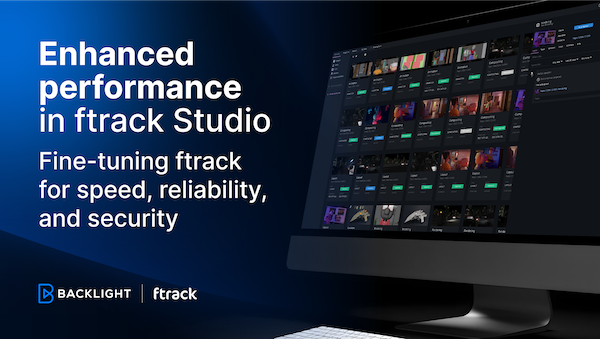
Enhanced performance in ftrack Studio: Fine-tuning for speed, reliability, and security
Chris McMahon | API, Developer, New features, Product, Productivity, Studio | No Comments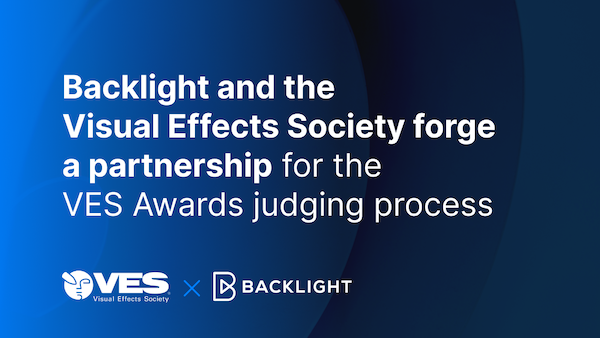
Backlight and the Visual Effects Society forge a partnership for the VES Awards judging process
Kelly Messori | Case Study | No Comments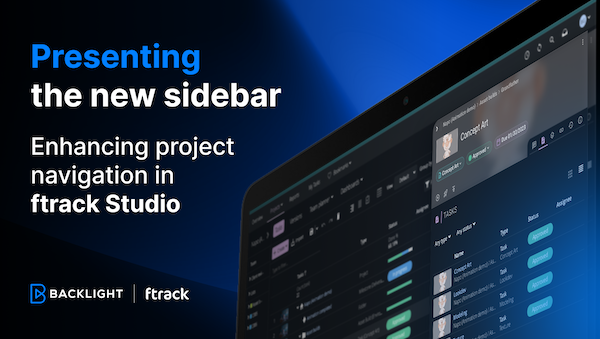
Presenting the new sidebar: Enhancing project navigation in ftrack Studio
Chris McMahon | New features, Product, Release, Studio | No Comments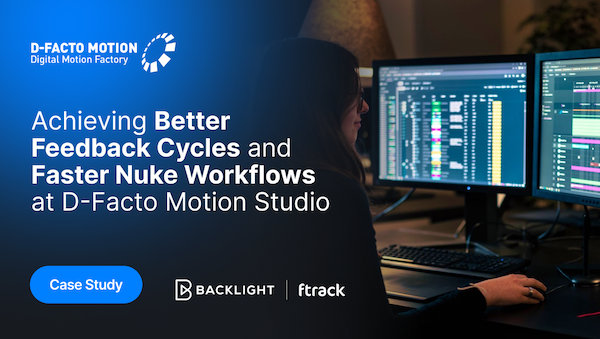
Achieving Better Feedback Cycles and Faster Nuke Workflows at D-Facto Motion Studio
Kelly Messori | Case Study, Studio | No Comments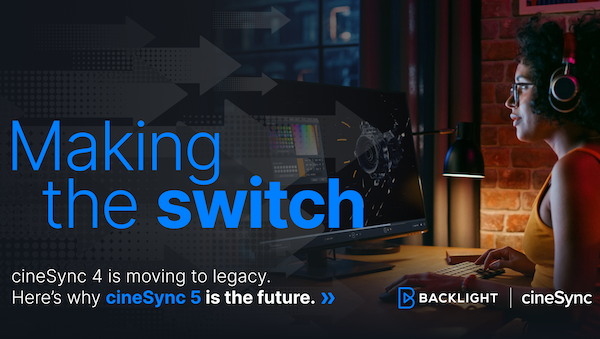
Making the switch: The transition to cineSync 5
Mahey | Announcements, cineSync, News, Product | No Comments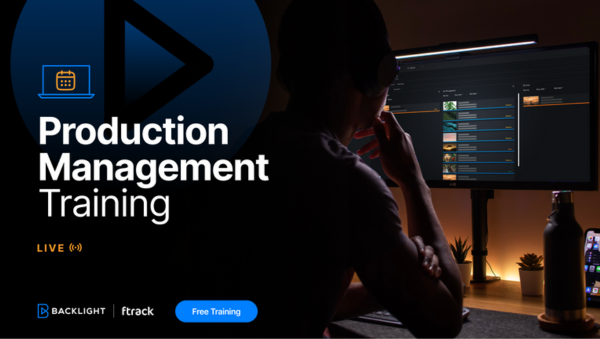
Supporting Your Studio: Free ftrack Studio Training and Office Hours from Backlight
Kelly Messori | News | No Comments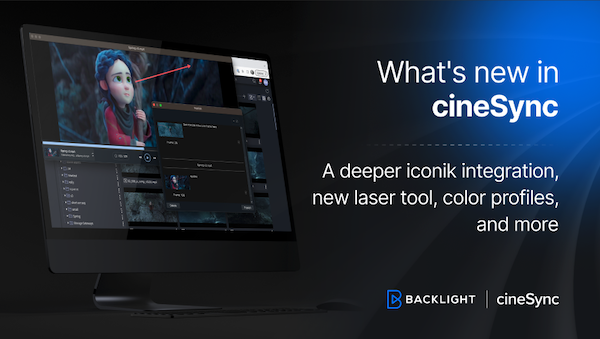
What’s new in cineSync – a deeper iconik integration, laser tool, OTIOZ support, and more
Chris McMahon | cineSync, New features, Product, Release | No Comments













